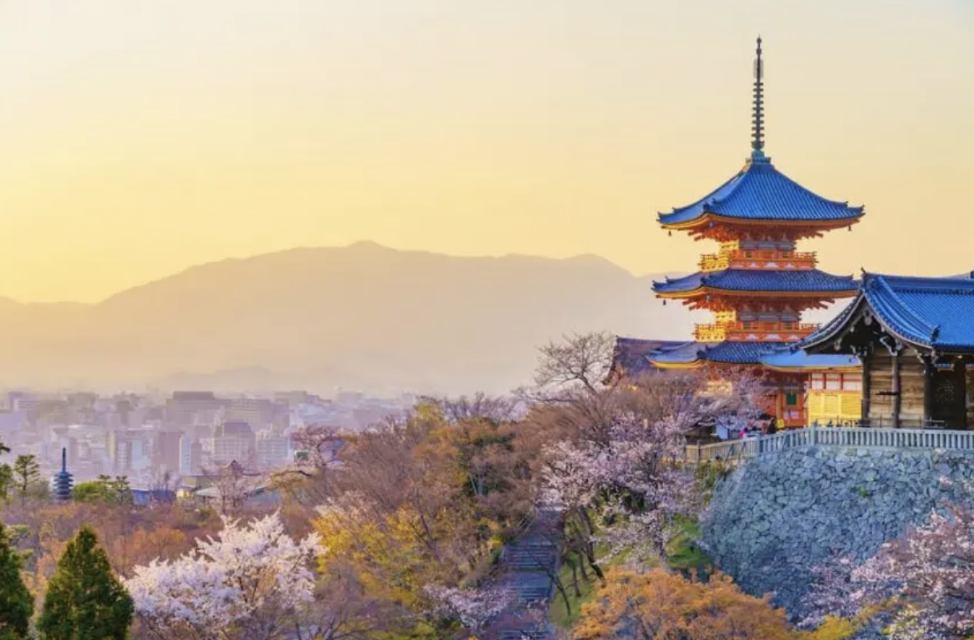
Kyoto, the cultural heart of Japan, is renowned for its stunning temples, traditional tea houses, and historic districts like Gion. Just a short trip away, Osaka offers a vibrant contrast with its modern skyline, bustling food scene, and lively areas like Dotonbori, known for its neon lights, street food, and vibrant nightlife. Nearby Nara, Japan's ancient capital, is famous for its friendly free-roaming deer and iconic landmarks such as Todai-ji Temple, home to the Great Buddha statue. Together, these cities provide a rich blend of history, culture, and modern experiences, making the Kansai region a must-visit destination.
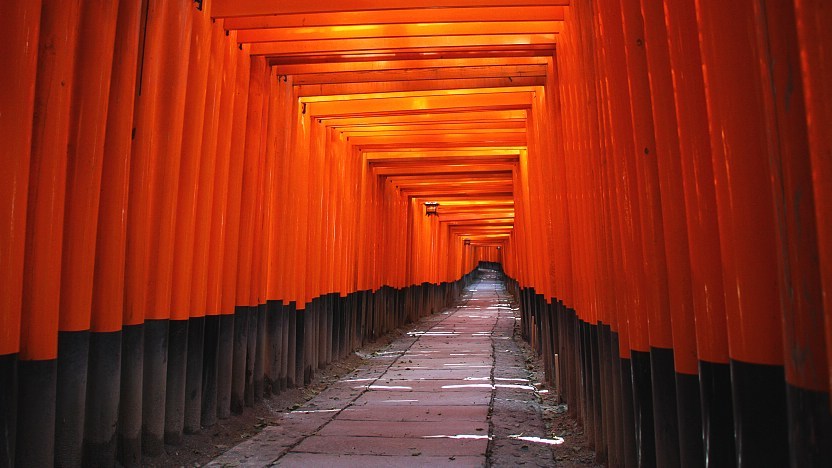 Fushimi
Inari Shrine: This iconic shrine is famous for its thousand
bright orange torii gates that form a stunning 2-mile-long path up a mountainside. Accessible from
Fushimi-Inari Station, the area is bustling with street vendors offering delicious snacks. Arrive early
to avoid crowds and enjoy serene photo opportunities. A side path to Kobotakaki Falls offers a peaceful
bamboo forest, providing a quieter escape from the main trail. Gets extremely busy - go VERY EARLY.
Fushimi
Inari Shrine: This iconic shrine is famous for its thousand
bright orange torii gates that form a stunning 2-mile-long path up a mountainside. Accessible from
Fushimi-Inari Station, the area is bustling with street vendors offering delicious snacks. Arrive early
to avoid crowds and enjoy serene photo opportunities. A side path to Kobotakaki Falls offers a peaceful
bamboo forest, providing a quieter escape from the main trail. Gets extremely busy - go VERY EARLY.
 Kinkaku-ji
(Golden Pavilion): One of Kyoto's most famous landmarks,
this stunning golden temple reflects beautifully on the surrounding pond, creating a picturesque scene.
It's a perfect spot for photography, especially during the vibrant colors of autumn or cherry blossom
season.
Kinkaku-ji
(Golden Pavilion): One of Kyoto's most famous landmarks,
this stunning golden temple reflects beautifully on the surrounding pond, creating a picturesque scene.
It's a perfect spot for photography, especially during the vibrant colors of autumn or cherry blossom
season.
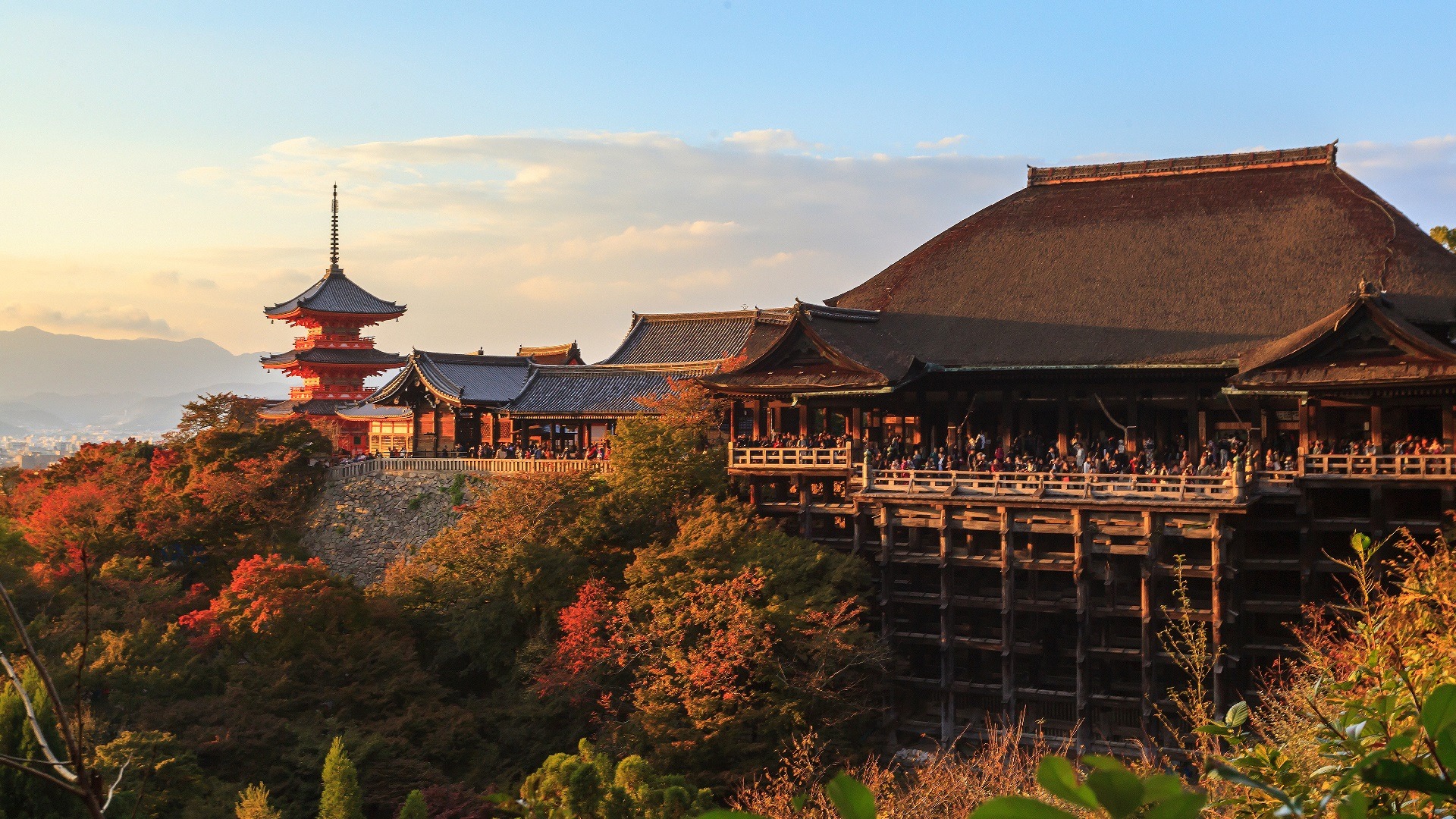 Kiyomizu-dera
Temple: A UNESCO World Heritage site, this historic
temple is perched on a hill and offers breathtaking views of Kyoto. Its massive wooden stage, supported
by hundreds of wooden pillars, is surrounded by cherry blossoms in spring and colorful leaves in autumn.
Kiyomizu-dera
Temple: A UNESCO World Heritage site, this historic
temple is perched on a hill and offers breathtaking views of Kyoto. Its massive wooden stage, supported
by hundreds of wooden pillars, is surrounded by cherry blossoms in spring and colorful leaves in autumn.
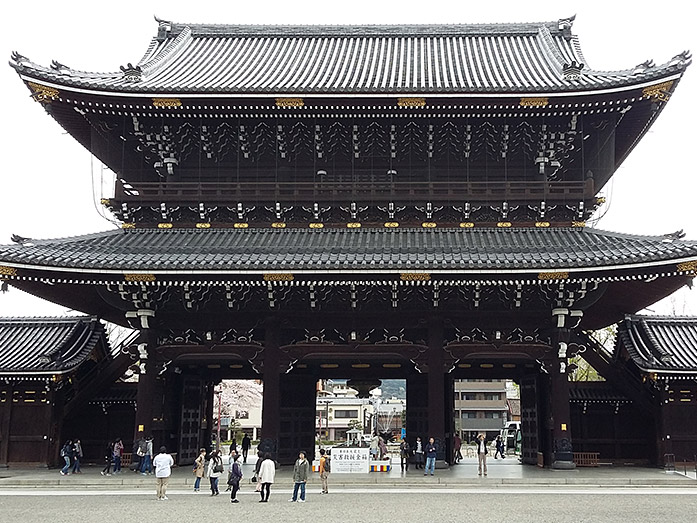 Higashi
Hongan-ji: A massive and less touristy Buddhist temple near
Kyoto Station. Its spacious wooden halls and serene atmosphere make it a peaceful retreat from the
city's hustle and bustle.
Higashi
Hongan-ji: A massive and less touristy Buddhist temple near
Kyoto Station. Its spacious wooden halls and serene atmosphere make it a peaceful retreat from the
city's hustle and bustle.
 Philosopher's
Path: A 1.5-mile scenic path along a canal, lined with
cherry blossoms in spring. It's a tranquil and reflective walk, dotted with small shrines, temples,
cafes, and benches, making it a great spot for journaling or relaxing.
Philosopher's
Path: A 1.5-mile scenic path along a canal, lined with
cherry blossoms in spring. It's a tranquil and reflective walk, dotted with small shrines, temples,
cafes, and benches, making it a great spot for journaling or relaxing.
Restaurants:
Drinks & Entertainment:
Arashiyama is a scenic district on the western outskirts of Kyoto, known for its natural beauty and cultural attractions. Its iconic Bamboo Grove offers a tranquil, otherworldly experience as you walk through towering bamboo stalks. Visitors can enjoy a boat ride along the Hozugawa River, explore the famous Togetsukyo Bridge, or hike to the Iwatayama Monkey Park, home to wild monkeys and panoramic views of Kyoto. The area is particularly stunning during the cherry blossom season in spring and the colorful foliage of autumn. Arashiyama combines serene landscapes with rich cultural experiences, making it a must-visit destination.
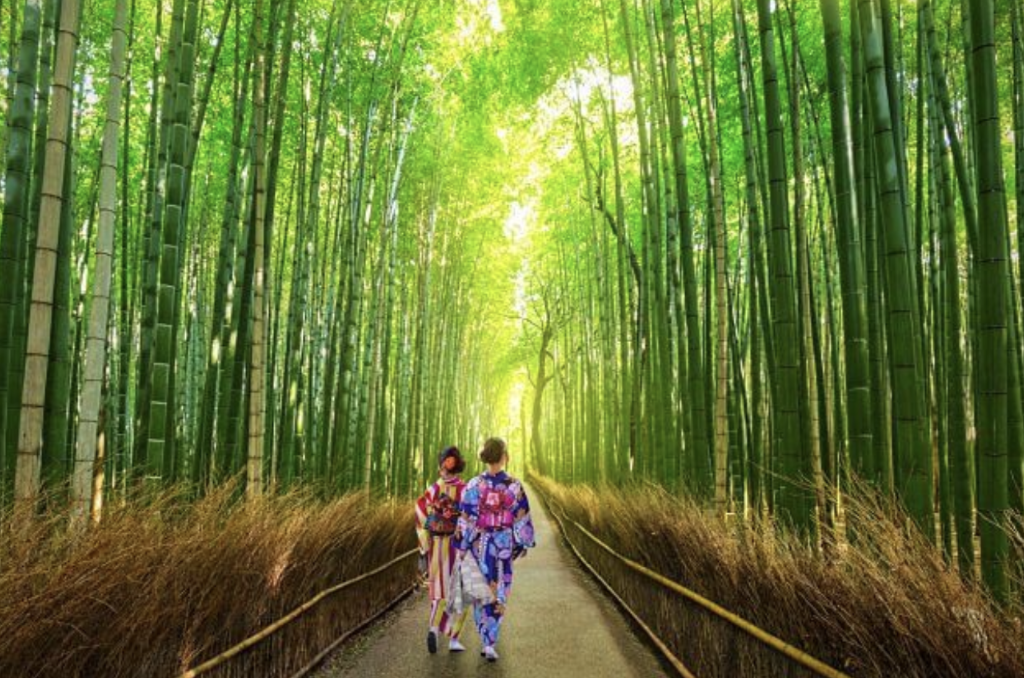
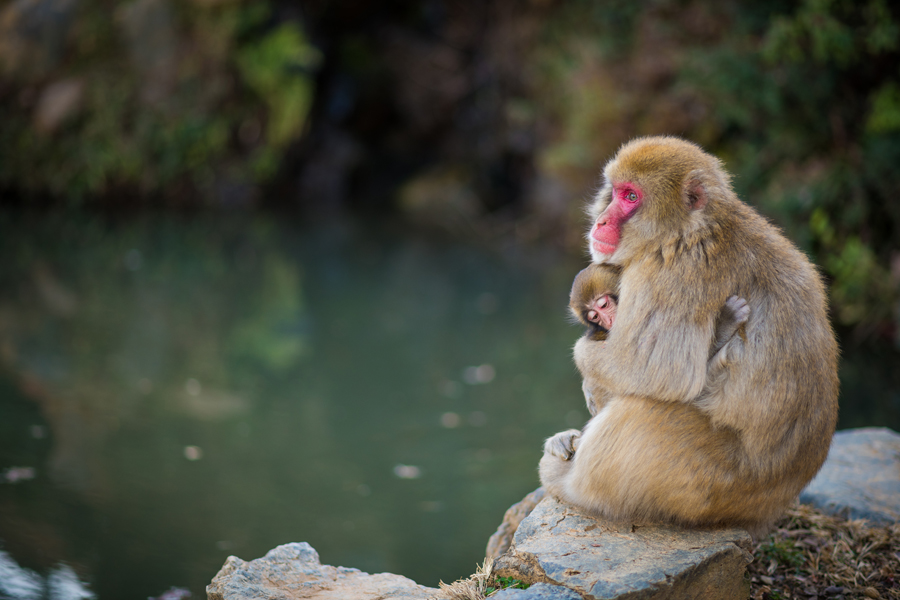 Arashiyama Monkey Park:
Located atop a scenic hill, this park is home to wild Japanese macaques, which roam freely in their
natural habitat. Visitors can enjoy close encounters with the monkeys while taking in stunning views of
Kyoto from the park's summit. The gentle hike to the park adds to the adventure and rewards you with an
unforgettable experience.
Arashiyama Monkey Park:
Located atop a scenic hill, this park is home to wild Japanese macaques, which roam freely in their
natural habitat. Visitors can enjoy close encounters with the monkeys while taking in stunning views of
Kyoto from the park's summit. The gentle hike to the park adds to the adventure and rewards you with an
unforgettable experience.
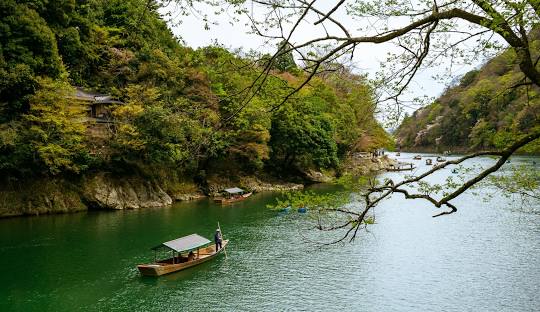 Hozugawa
River Boat Ride: A traditional boat cruise down the scenic
Hozugawa River, offering a tranquil experience with views of the lush valleys and occasional wildlife
sightings.
Hozugawa
River Boat Ride: A traditional boat cruise down the scenic
Hozugawa River, offering a tranquil experience with views of the lush valleys and occasional wildlife
sightings.
Gion is Kyoto's famed Geisha District (called "Geiko" in Kyoto). Though Gion's many tea houses and entertainment restaurants are closed to foreigners, Geiko and Maiko in their traditional makeup with gilded hair in full kimono can be seen drifting the streets on their way to and from work, where they fan dance, sing, and play instruments for customers. Gion lights up at night, when the ancient-looking streets glow with lanterns along the river, where weeping willows catch the starlight and the air is warmed with conversation. Groups pass through to populate the restaurants and bars along the riverfront, but Gion still manages to be a mostly quiet district, due in large part to limited automotive traffic through many of its streets. Gion is a wonderful place to indulge in Kyoto's local and customary cuisines, and is best enjoyed after dark.
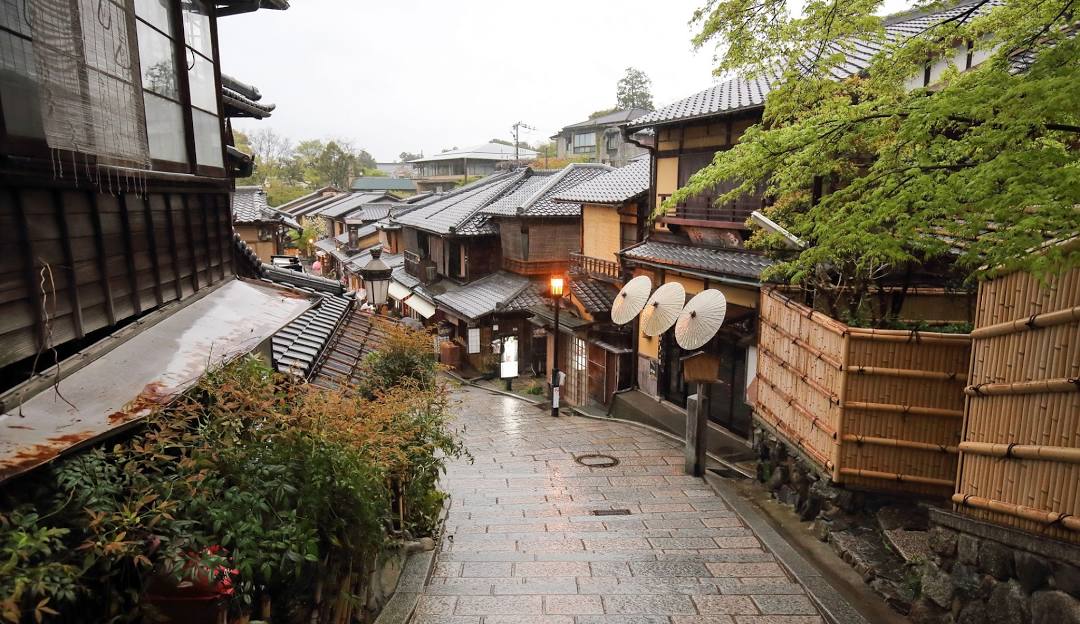
 Kennin-ji
Temple: The oldest Zen temple in Kyoto, founded in 1202. It is known for its
tranquil atmosphere, beautifully landscaped gardens, and historic architecture. The temple is famous for
its magnificent painting of twin dragons on the ceiling of the Dharma Hall, symbolizing protection of
the Buddhist teachings.
Kennin-ji
Temple: The oldest Zen temple in Kyoto, founded in 1202. It is known for its
tranquil atmosphere, beautifully landscaped gardens, and historic architecture. The temple is famous for
its magnificent painting of twin dragons on the ceiling of the Dharma Hall, symbolizing protection of
the Buddhist teachings.
Restaurants:
Nara, Japan's first permanent capital, is a city steeped in history and culture, offering a blend of stunning natural beauty and iconic landmarks. Located just a short train ride from Kyoto, Nara is best known for its historic sites, including Todai-ji Temple, home to the world's largest bronze Buddha statue, and Kasuga-taisha Shrine, famous for its bronze and stone lanterns. One of Nara's most unique and beloved features is Nara Park, where friendly, free-roaming deer are considered sacred messengers of the gods. Visitors can feed the deer special crackers and interact with them in this serene park, which also houses picturesque gardens and ponds. The city's tranquil atmosphere, combined with its rich cultural heritage and well-preserved landmarks, makes it a must-visit destination for anyone exploring Japan.
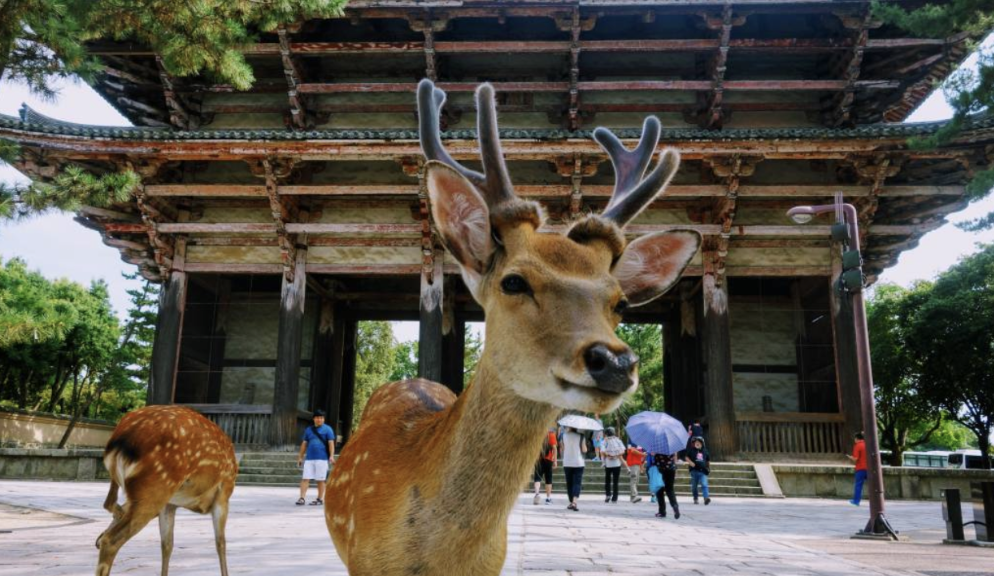 Nara
Park: A sprawling park known for its friendly, free-roaming deer
that are considered sacred messengers of the gods. The park also features serene ponds, historic
temples, and picturesque landscapes, making it a family-friendly destination.
Nara
Park: A sprawling park known for its friendly, free-roaming deer
that are considered sacred messengers of the gods. The park also features serene ponds, historic
temples, and picturesque landscapes, making it a family-friendly destination.
 Todaiji
Temple: One of Japan's most iconic temples, home to the world's
largest bronze Buddha statue housed in a grand wooden hall. The surrounding grounds include peaceful
gardens and deer from nearby Nara Park, making it a must-visit landmark.
Todaiji
Temple: One of Japan's most iconic temples, home to the world's
largest bronze Buddha statue housed in a grand wooden hall. The surrounding grounds include peaceful
gardens and deer from nearby Nara Park, making it a must-visit landmark.
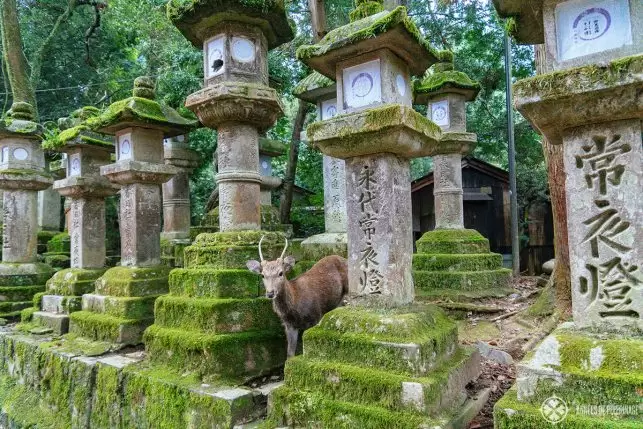 Kasuga-taisha:
A famous Shinto shrine known for its hundreds of bronze
and stone lanterns that create a magical atmosphere, especially during the Lantern Festivals. The
shrine's bright vermillion architecture is a striking contrast to its lush surroundings.
Kasuga-taisha:
A famous Shinto shrine known for its hundreds of bronze
and stone lanterns that create a magical atmosphere, especially during the Lantern Festivals. The
shrine's bright vermillion architecture is a striking contrast to its lush surroundings.
Restaurants & Cafes:
Osaka, Japan's third-largest city, is a vibrant metropolis renowned for its modern architecture, bustling nightlife, and culinary delights. Known as the “Kitchen of Japan,” Osaka is a haven for food lovers, offering specialties like takoyaki (octopus balls), okonomiyaki (savory pancakes), and kushikatsu (deep-fried skewers). The city's iconic landmarks include Osaka Castle, a historic site surrounded by beautiful gardens, and the futuristic Umeda Sky Building, which offers panoramic views of the city. Osaka's neighborhoods are diverse and lively, from the neon-lit streets of Dotonbori, famous for its entertainment and street food, to the nostalgic charm of Shinsekai, with its retro vibes and hidden izakayas. The city is also a gateway to Universal Studios Japan, a popular theme park, and has a rich cultural side, with historical temples and shrines. Osaka's friendly locals, energetic atmosphere, and unique blend of old and new make it a must-visit destination for travelers exploring Japan.
 Osaka
Castle: A symbol of Japan's feudal history, Osaka Castle is one
of the country's most famous landmarks. Surrounded by beautiful gardens and a massive moat, the castle
offers stunning architecture and a museum that chronicles its rich past. It's particularly breathtaking
during cherry blossom season.
Osaka
Castle: A symbol of Japan's feudal history, Osaka Castle is one
of the country's most famous landmarks. Surrounded by beautiful gardens and a massive moat, the castle
offers stunning architecture and a museum that chronicles its rich past. It's particularly breathtaking
during cherry blossom season.
 Dotonbori:
The vibrant heart of Osaka, Dotonbori is famous for its
towering neon signs, including the iconic Glico Running Man. It's a hub for entertainment, nightlife,
and street food, offering everything from takoyaki and okonomiyaki to lively bars and clubs.
Dotonbori:
The vibrant heart of Osaka, Dotonbori is famous for its
towering neon signs, including the iconic Glico Running Man. It's a hub for entertainment, nightlife,
and street food, offering everything from takoyaki and okonomiyaki to lively bars and clubs.
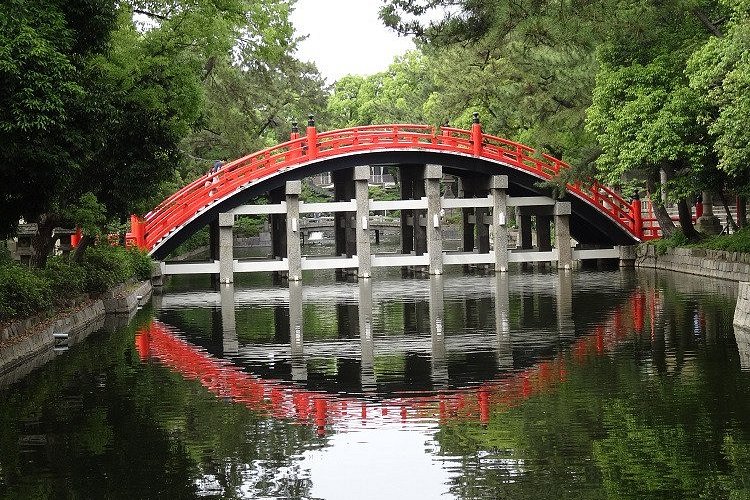 Sumiyoshi
Taisha Shrine:
One of Japan's oldest Shinto shrines, renowned for its unique architectural style and picturesque arched
bridge (Sorihashi Bridge). A peaceful retreat from the bustling city.
Sumiyoshi
Taisha Shrine:
One of Japan's oldest Shinto shrines, renowned for its unique architectural style and picturesque arched
bridge (Sorihashi Bridge). A peaceful retreat from the bustling city.
Appendix of Kyoto videos: